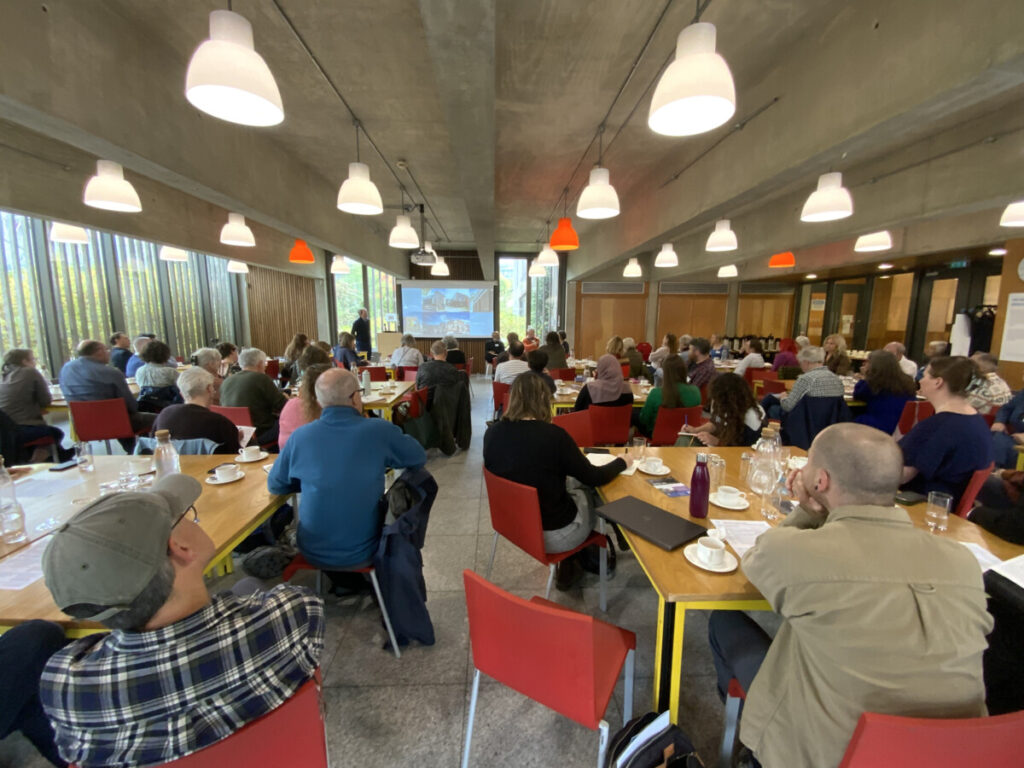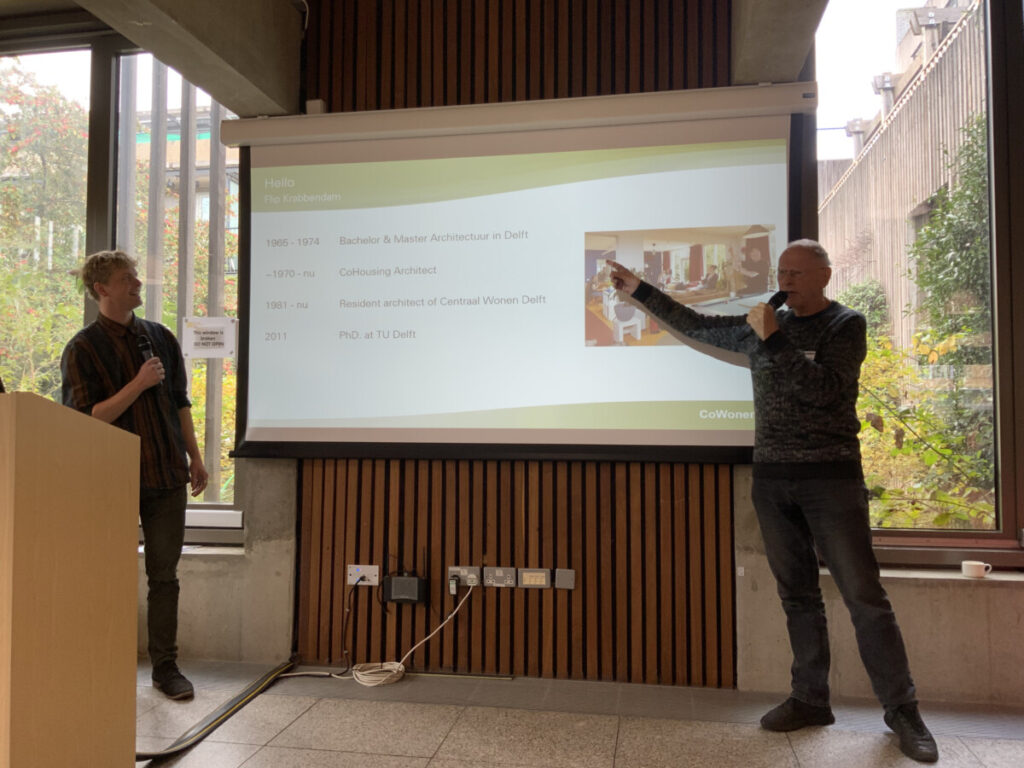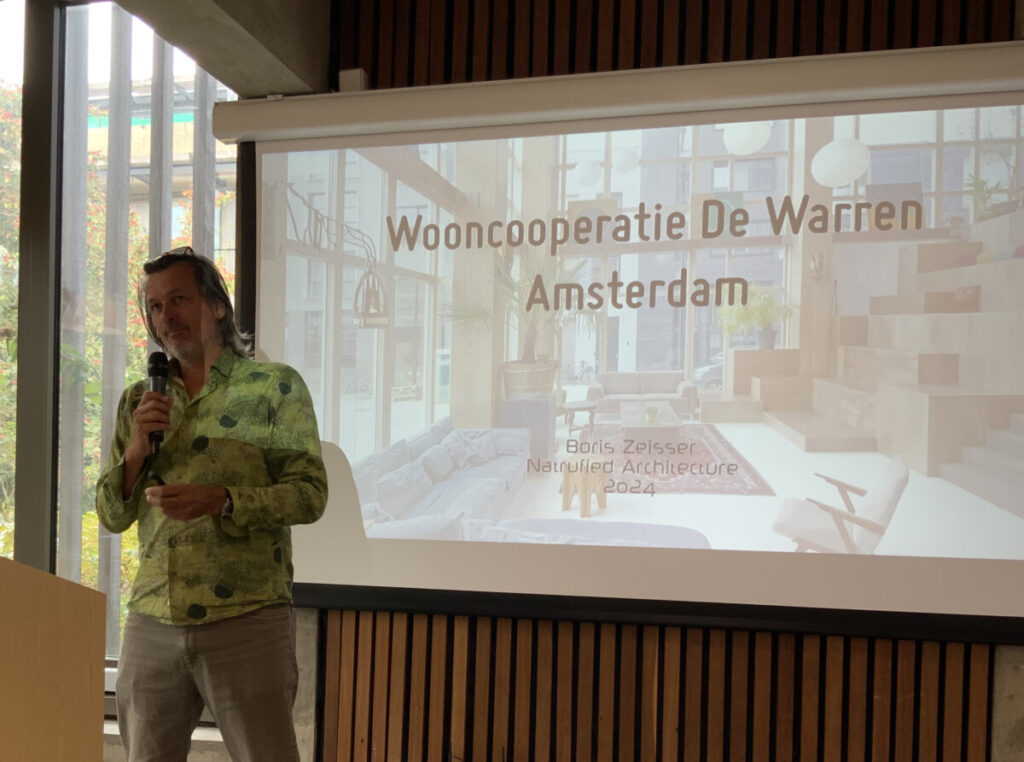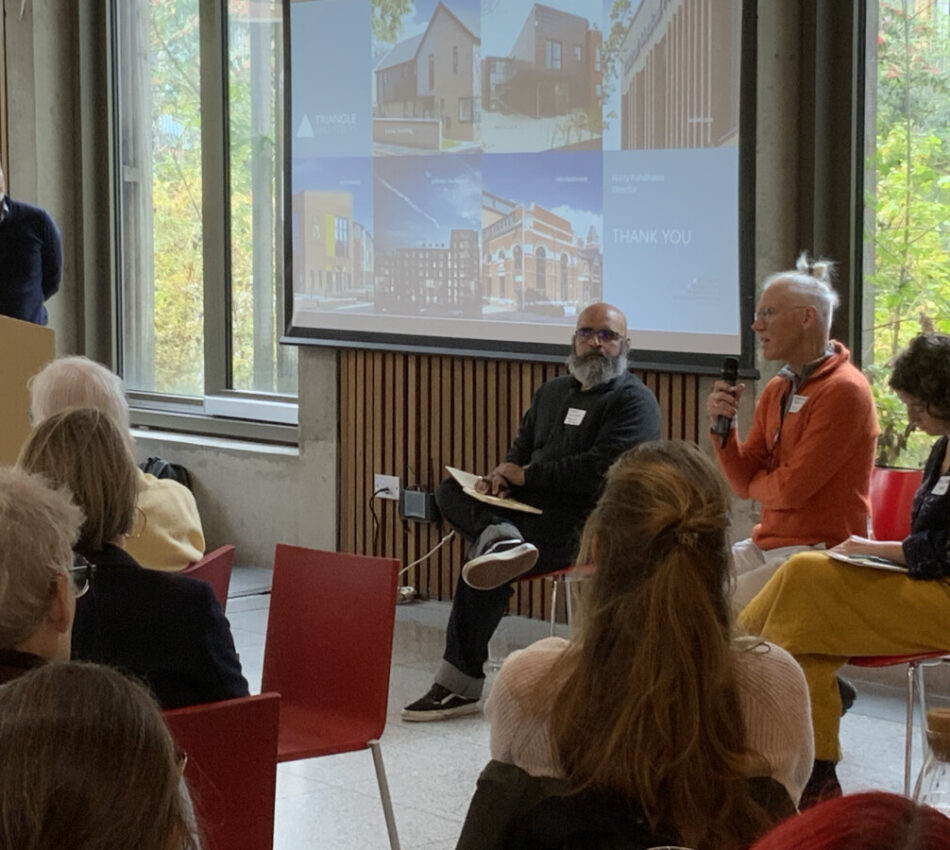Written by:
Last week, The Glass-House team ran a workshop along with our strategic partner the Open University Design Group, at the inspiring event CODESIGN AND COHOUSING: Creating Better Places Together. The event was this year’s annual “cohousing summit”, organised by the UK Cohousing Network (UKCN), and brought together a large community of interest from the UK and abroad. This was a committed and passionate group, driven by the conviction that cohousing, and the values and principles that underlie it, should have a stronger presence in the UK housing landscape.
I wholeheartedly agree.

It’s worth being clear that cohousing is not for everyone. It takes a commitment to a certain type of communal living and a willingness to be an active part of a self-defining community. In today’s landscape, cohousing groups also have to be hugely determined, resourceful and willing to take on a challenging project to bring a cohousing scheme to fruition. There is simply not yet either the political will or the support infrastructure in place in the UK to make this an easy option.
However, there were some inspiring stories and points of discussion at this cohousing event that struck a chord for me and that I think are useful to the broader national dialogue around housing.
Does co-design really matter?
At the end of the morning discussion, a brave soul posed the provocative question to the room, “Does co-design really matter?” Owen Jarvis, CEO of UKCN, came up with an inspired way to address the question. He invited three of the event contributors to the front of the room to give their response, but he also left a couple of chairs free next to them and invited anyone from the room to come to the front and occupy a chair if they had something to say. What ensued was a series of voices, with people occupying and then handing over chairs to others.
A couple of really key points emerged from this tapestry of viewpoints. Firstly, co-design is not just about the built outcomes, but about the journey that people travel together through the process. Several people spoke of the power of co-design in bringing people together around shared values and objectives, and in building community. In the case of co-designing a cohousing project, while those involved in the design process may eventually leave and give way to new people occupying the homes, people felt that the values and sense of community both embedded in the design, and as a result of a collaborative design process, would endure.
It was also clear that, within the room and indeed in the national and international landscape, the term co-design means different things to different people. In some ways, this is both natural and inevitable, but I do think it suggests that any group hoping to embark on a co-design process should first agree what they mean by co-design. What are the stages, qualities and the rules of engagement in a co-design process as that group understands it, and needs to agree, before they start their collaborative process?
Designing for community
There were a number of inspiring architects in the room, sharing stories on cohousing projects that have been involved in realising. As well as some of the best and brightest from the UK, we were also treated to some visitors from The Netherlands, who shared their stories, and some of their approaches and guiding principles for successfully designing cohousing schemes.

Flip Krabbendam and Tijmen Kuyper threw out the assertion that “If you co-design, you get unique places.” They stressed the value of engagement and collaborative design to the creative process, tapping into the knowledge, experience and ideas of a collective of people. However, they had also formulated some clear principles and design objectives that they felt were crucial to successfully designing cohousing.
One of my favourites was the importance of designing for both casual encounters and planned interactions. They stressed the importance of the casual encounter, those opportunistic moments when we bump into others and interact. They described these as the “oxygen of society”. Designing for these meant creating circulation strategies with pause spaces, moments in your movement through a place where you might naturally stop, sit down, talk to somebody, watch what is happening etc. They argued that pause spaces can and should be built into the shortest routes as well as the more meandering ones. Not only can this make movement through our places more interesting, it creates those hugely important interactions that improve our quality of life.
Balancing cost, design quality and environmental impact
Another Dutch architect, Boris Zeisser from Natrufied Architecture, shared the story of the inspiring De Warren housing cooperative, in which he worked with a group of young adults to develop a cohousing block in a new area of land in Amsterdam, designated for cohousing. This group was particularly committed to creating an environmentally responsible and sustainable building, while operating on a challenging budget, and he spoke of the importance of making it clear that there would be a give and take in terms of balancing sustainability objectives with budget. He also stressed to us that all involved agreed that a limited budget should not become an excuse not to build sustainably and responsibly.

Co-design for change
Another insightful anecdote highlighted through the De Warren project was the importance of designing for changes to our circumstances and stages of life. He noted that when they started the design process, all of the group were in their late twenties, free of family commitments, but that by the time building had been built and they moved in, many had started families, and there were now 7 babies in the mix. Their cohousing community had changed and while, fortunately, they had built flexibility into the design to accommodate this, in some way the co-design process continued, and still continues as they renegotiate how they will live together and occupy shared spaces.
Cohousing as a catalyst for improving our housing landscape
The Cohousing Summit was a hugely inspiring day. It demonstrated the importance of cohousing as an enticing way of life, and as a means of developing high quality homes and building communities. It also asked challenging questions around the value of co-design, and I think, made a convincing case for the power of co-design in bringing people together around shared values and goals.
A huge thank you to Owen and the UKCN team, to the inspiring speakers and to the cohousing community in the room who shared their experiences, their knowledge and infectious passion for the movement. I encourage you all to learn more about cohousing in the UK and abroad, and to help champion what it can contribute to how we shape our home, neighbourhoods and communities.
Images courtesy of our Open University colleagues Katerina Alexiou and Theodore Zamenopoulos.
There is so much we can do to improve the way we are building homes and shaping neighbourhoods in this country. If you have some ideas to share, please join our upcoming Glass-House Chat Can housing be a catalyst for great places? Online on Thursday 17 October.


